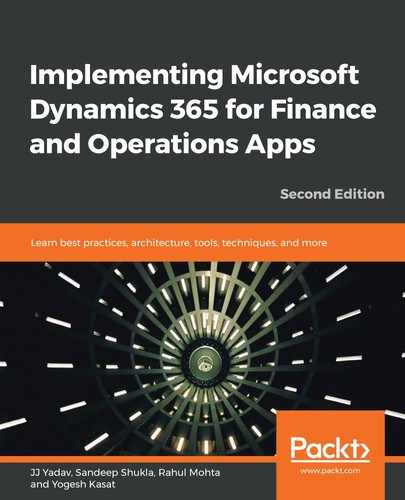Book Description
Harness the power of Finance and Operations apps, and discover all you need for their implementation
Key Features
- Manage and plan different Dynamics configurations, designs, and products
- Learn how to manage projects for pre-sales and implementation using Microsoft Dynamics Lifecycle Services (LCS)
- Discover various integration planning techniques, tools, and frameworks such as PowerApps and Power Automate
Book Description
Microsoft Dynamics 365 for Finance and Operations is a modern cloud ERP platform that adopts a mobile-first approach suitable for medium-to-large enterprises. This book covers the entire implementation process of Dynamics 365 Finance and Operation Apps, including post-implementation and business transformation.
The updated second edition starts with an introduction to Microsoft Dynamics 365, describing different apps and tools under it. You will learn about different implementation methodologies such as Waterfall and Agile, for your projects. We will cover various application components and architectures of Dynamics such as requirements processing, development, reports and analytics, and integration. With the help of tips, techniques, and best practices, you'll explore strategies for managing configurations and data migrations. As you read further, you'll discover development tools and processes in Dynamics for building customized solutions in Dynamics. The book will also demonstrate analytics and financial reporting options such as Power BI and Cortana Intelligence. Finally, you'll learn the importance of testing and explore various automated testing strategies.
By the end of this book, you will have gained the necessary knowledge to implement Microsoft business solutions with Dynamics 365 for Finance and Operations Apps.
What you will learn
- Understand the architecture of Dynamics 365 for Finance and Operations Apps
- Implement Dynamics with confidence to manage finances in your business
- Get up to speed with different methodologies and support cycles of the Microsoft Dynamics architecture
- Explore best practices to analyze the requirements of your business
- Understand the technique of data migration from legacy systems
- Leverage the capabilities of Power BI to make informed business decisions
- Manage all your upgrades through One Version service updates
Who this book is for
This book is for consultants, technical managers, project managers, or solution architects who are looking to implement Microsoft Dynamics 365 Finance and Operations apps in their business. A basic understanding of the enterprise resource planning (ERP) implementation process and software lifecycle is expected.
Table of Contents
- Title Page
- Copyright and Credits
- Dedication
- About Packt
- Contributors
- Preface
- Introduction to Dynamics 365 Finance and Operations
- Methodology and Initiation
- Lifecycle Services (LCS) and Tools
- Architecture, Deployment, and Environments
- Understanding architecture
- Understanding application components and architecture
- Working with identity management 
- Understanding the data layer components
- Understanding the platform-layer components 
- Understanding the application layer components
- Understanding the client components
- Using LCS
- Understanding development architecture 
- Understanding integration architecture
- Understanding security architecture
- Understanding deployment options
- Understanding cloud deployment and environment planning
- Summary
- Requirements and Process Analysis
- Requirements scoping
- Hierarchy of business processes and subprocesses 
- LCS BPM and Azure DevOps
- Understanding Microsoft Azure DevOps
- Requirement-gathering techniques
- Requirements Traceability Matrix (RTM)
- Requirement segmentation and ownership
- Analysis of requirements
- Solution blueprint
- Key decision log
- Best practices in managing requirements
- Summary
- Configuration and Data Management
- Explaining configuration management 
- Managing data migration
- Introducing data management tools
- The data management framework
- Database operations
- Cross-company data sharing 
- Data management scenarios
- Best practices in managing configurations and data migration
- Summary
- Solution Planning and Design
- Integration Technologies, Planning, and Design
- Basic web integration concepts
- Learning about the integration architecture
- Integration concepts in Finance and Operations
- Integration scenarios and planning
- Integration design and development
- Best practices and recommendations
- Summary
- Customization and Extension
- Understanding solution architecture and development concepts
- Understanding the development environment
- Development planning
- Development process 
- Build and continuous updates
- Guidelines and best practices
- Summary
- Analytics, Business Intelligence, and Reporting
- Gathering reporting and analytics requirements
- Reporting scenarios and tools
- Analytics data strategy and data integrations
- Moving from relational databases to Azure Data Lake
- Best practices in analytics and information insights
- Summary
- Testing and Training
- Managing Go-Live and Post Go-Live
- One Version Service Updates
- Other Books You May Enjoy
